In our previous blogpost, we looked at the reasons why the best marketing strategies now are digital, and how to shift to an inbound focus with your marketing programs. In this post, we drill down into best practices for your key digital marketing tools – website, online content, social media and email programs – with specific suggestions on how you can apply these best practices to your marketing strategies.
Website – your flagship marketing tool
In many ways your website is your most important marketing tool. It’s the home base for all of your content, the destination for your inbound programs, the home of your corporate profile, a key part of your recruitment strategy, and more. Your website has to work hard, maximizing ROI and putting the best face forward for your organization.
A good website is evergreen, always offering new content, ideas and updates. It also needs to offer lots of Calls-to-Action, or CTAs, so visitors can engage and interact with your website and content. CTAs can include social sharing buttons, content downloads, ‘read more’ buttons, ‘click here’ options, newsletter signups, etc. But don’t make your pages too clunky – you also need to ensure that the user experience of your website matches the quality of experience found on the biggest online platforms. And since more people are using smartphones for their online activities, your site needs to be optimized for mobile. A lot of B2B online searches are still done on desktops, but you need to offer a top-quality experience to visitors across all types of devices.
A good website is also optimized for SEO, or Search Engine Optimization. When it comes to SEO, you need to be an SEO expert or hire an expert – because if your website is not optimized for SEO, you’re in trouble. SEO impacts all aspects of your website, from your domain name to your internal links, to your content structure and keywords. To support your inbound strategy effectively, make sure you understand and implement the latest SEO techniques and tactics.
Content – where quality counts
What do your prospects and customers want? Information that is matched to their pain points, and that helps them solve problems and work towards their goals. To determine what kind of content you should provide, map out the types of information your targets need at each stage in the buyer’s journey, and shape your content to match. Keep your content fresh and relevant, by adding new content frequently. Create a 12-month editorial calendar and content budget, and stick to it. Offer a mix of formats so visitors can choose their preferred medium – i.e. offer a customer success story as a web page, a video, and a more detailed downloadable version. And remember that the accuracy, relevance and presentation of your content is key to establishing your authority and reputation in your field or industry.
Engage with social media
As a B2B company, do you need to be active on social media? Yes, because even the most “traditional” organizations can benefit from having an active presence on social media platforms. But you don’t have to be active on all of them. First, choose the platforms where you are most likely to find your targets. For a lot of B2B companies, LinkedIn is the most relevant platform, because it’s for business professionals. Or Instagram might be useful to showcase your corporate culture to help in recruiting. Once you choose your platforms, define your social media goals. Do you want to participate in industry discussions on LinkedIn? Post blogs on LinkedIn to generate discussion? Recruit with a campaign on Instagram? Or try a sponsored post, or an ad?
Whatever platforms you choose, don’t use a hard sell. Instead, aim to inform, entertain, or help with your posts or ads. Use photos and videos to accompany your posts, since they drive engagement. Whether you decide to be very active, or just a little, create an editorial calendar for your social media activity. And be sure to amplify all new content you post on your website on your social media channels.
Email programs – think agile
Email is still one of best tools in the B2B marketer’s toolkit, offering a low-cost way to reach your targets. To strengthen your email game, try an agile approach. Instead of a big email blast, send out mails in small batches, and adjust them (subject lines, CTAs, copy, etc.) based on the responses before launching further. With the detailed analytics provided by marketing automation solutions, it’s possible to see in real time how your emails are succeeding, and tweak them as you proceed.
Make sure that your emails offer helpful information, not just a sales pitch. Stick to one topic per mail, and address your email to a real person, from a real person. Using actual names boosts credibility and open rates. And make sure your emails are optimized for mobile, just like your website.
If you’d like to learn more about developing digital marketing strategies for your organization, we would like to invite you to our free inspiration session “Creating a winning brand in the digital age” on Thursday, November 7 from 14h00-16h00 at Living Stone, Oudenweg 42 in Beerlegem. We’d be glad to share our insights and expertise, and help you develop the best digital strategy to meet your goals.




